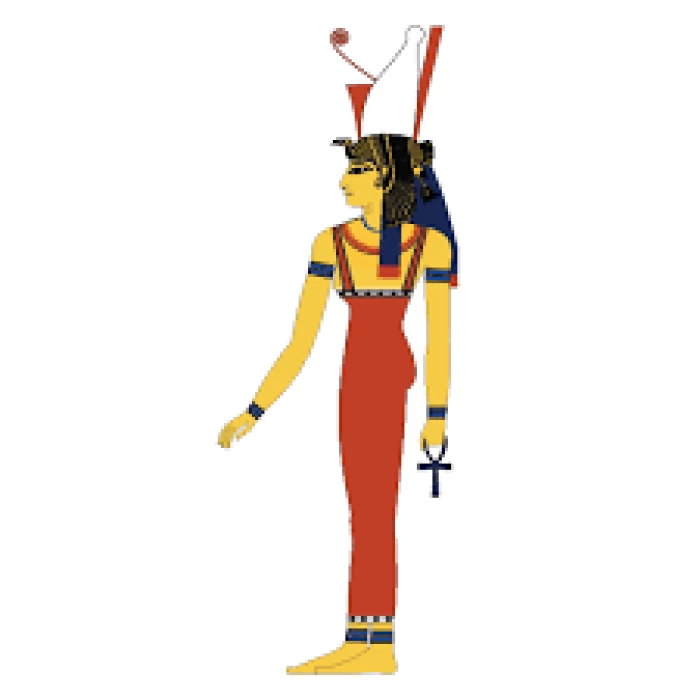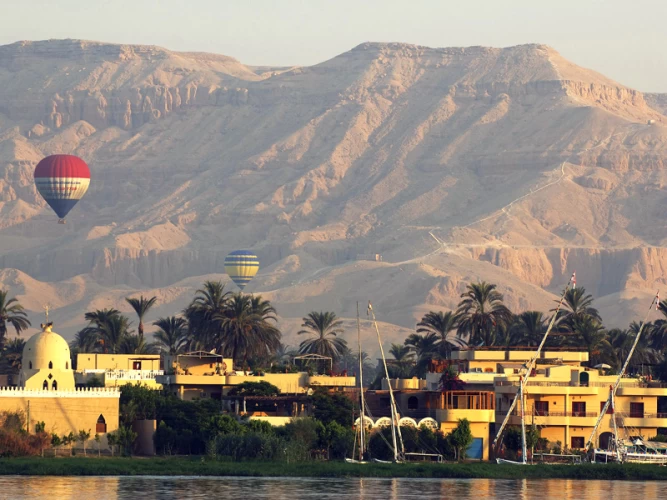
Goddess Mut | The Vulture Goddess of the Sky
Goddess Mut
The goddess Mut is represented by the vulture which in Egyptian has the phonetic value mwt which means "mother". Her iconography also presents her with a multi-colored appearance with a vulture-shaped headdress surmounted by the double crown of Upper and Lower Egypt. A place near Thebes was dedicated to her, called the Temple of Asher.
In art, Mut was portrayed as a woman with the wings of a vulture, holding an ankh sign (key of life), wearing the double crown of the lands of Upper and Lower Egypt and a red or blue dress, with the feather of the goddess Maat at her feet.
Gods in Ancient Egypt
Mut is sometimes depicted as a cobra, a cat, a cow, or as a lioness as well as a vulture. Before the end of the New Kingdom, almost all the images of female figures wearing the double crown of Upper and Lower Egypt were depictions of the goddess Mut, labeled here as "Lady of Heaven, Mistress of all Gods". The last image on this page shows the features of the goddess's face which mark this as a work done sometime between the 18th dynasty and relatively in the reign of Ramses II.
Queen Hatshepsut had the ancient Mut temple in Karnak rebuilt during her reign in the 18th dynasty. Previous excavators had thought that Amenhotep III had the temple built because of the hundreds of statues found for Sekhmet which had his name. However, Hatshepsut, who completed a huge number of temples and public buildings, had completed the work 75 years earlier. He began the custom of painting Mut with the crown of both Upper and Lower Egypt. Amenhotep III is believed to have removed most of the signs of Hatshepsut while taking credit for the projects he had built.
The goddess Mut is represented by the vulture which in Egyptian has the phonetic value mwt which means "mother". Her iconography also presents her with a multi-colored appearance with a vulture-shaped headdress surmounted by the double crown of Upper and Lower Egypt. A place near Thebes was dedicated to her, called the Temple of Asher.
Mut is sometimes depicted as a cobra, a cat, a cow, or as a lioness as well as a vulture. Before the end of the New Kingdom, almost all the images of female figures wearing the double crown of Upper and Lower Egypt were depictions of the goddess Mut, labeled here as "Lady of Heaven, Mistress of all Gods". The last image on this page shows the features of the goddess's face which mark this as a work done sometime between the 18th dynasty and relatively in the reign of Ramses II.
Queen Hatshepsut had the ancient Mut temple in Karnak rebuilt during her reign in the 18th dynasty. Previous excavators had thought that Amenhotep III had the temple built because of the hundreds of statues found for Sekhmet which had his name. However, Hatshepsut, who completed a huge number of temples and public buildings, had completed the work 75 years earlier. He began the custom of painting Mut with the crown of both Upper and Lower Egypt. Amenhotep III is believed to have removed most of the signs of Hatshepsut while taking credit for the projects he had built.
The Family Connections of the Goddess Mut
According to ancient texts, Mut had no fathers, as mythology holds that she was the Great Mother. However, despite being a mother goddess, she did not bear children. Instead, she adopted the war and moon goddesses, Mentu and Khonsu, respectively.
To worship the Theban Triad, the ancient Egyptians constructed the Temple of Amun at Luxor...During the 18th and 25th Dynasties, this triad was made up of Amun, his spouse Mut, and their son Khonsu.
Mut Cult
Temples of Mut can still be found in modern-day Egypt and Sudan. This reflects the popularity and devotion Mut enjoyed in ancient times. In Egypt, it became the Temple of Karnak, and in Sudan.
According to history, this temple housed the statue considered to be the actual embodiment of the Ka. The daily Mut cult involved rituals performed by the king and her priestesses. The interior reliefs of the temple depict scenes of priestesses worshipping Mut. Uniquely, these reliefs are the only surviving depictions of women practicing the cult from the ancient Egyptian period...During the 18th century, Pharaoh Hatshepsut ordered the reconstruction of the temple dedicated to Mut at Karnak. Hatshepsut began the tradition of depicting Mut in the crowns of Upper and Lower Egypt. Some historians believe that Amenhotep III removed most of Hatshepsut's markings and took credit for the project.
















